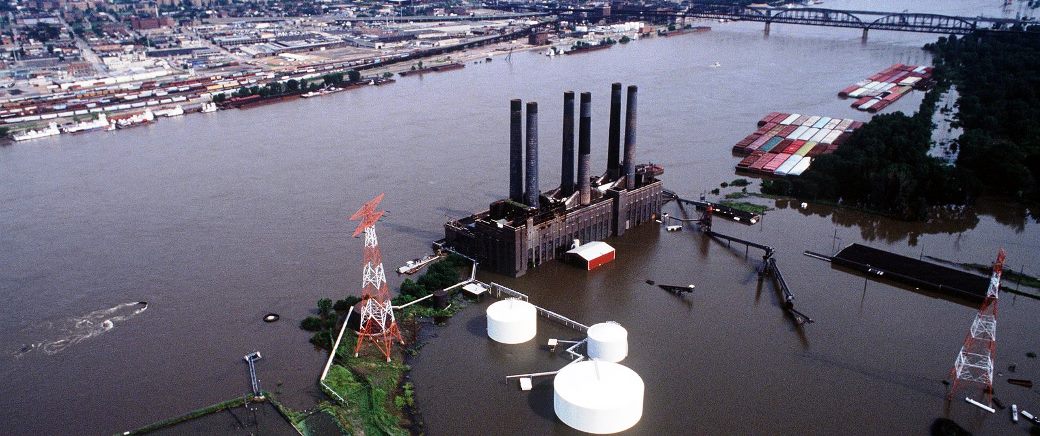A new economic study by Johns Hopkins University, in partnership with the American Flood Coalition, claims that $1 billion in flood resilience investments could create up to 40,000 new jobs in the United States.
The report is titled The Local Economic Impact of Flood-Resilient Infrastructure Projects. It was written by Matthew E. Kahn, Mac McComas, and Vrshank Ravi of the Johns Hopkins University’s 21st Century Cities Initiative. It uses data from the Federal Emergency Management Agency (FEMA) to measure the local economic impact of federal investments in infrastructure projects for flood-resilience, studying efforts in U.S. metropolitan areas from 2003 to 2018.
People and places can protect themselves against this risk by investing in flood resilient infrastructure, such as living shorelines, stormwater bioretention systems, wetlands restoration, elevating properties, seawalls, levees, and flood barriers.
Summary of the findings:
- We find that increasing funding for flood infrastructure projects in a metropolitan statistical area by $1 million is associated with an increase of 40 jobs in the construction and retail trade industries, with 25 in the construction industry and 15 in retail trade;
- We also find that $1 million in funding for flood infrastructure is associated with an increase of 4 construction businesses in the year of the award;
- In a sub-analysis of projects in Louisiana, we found that 80% of subcontracts went to businesses located in Coastal Louisiana parishes and 99% of subcontracts went to businesses in Louisiana; and
- Finally, we explore the potential that a large federal investment in flood-infrastructure could have in terms of learning by doing, home market effect, and technological innovation.
Here’s the report’s Introduction:
Water, and proximity to water, has driven economies for centuries. Water provides us with substantial benefits and economic well-being, including trade through ports; jobs in tourism, entertainment, fishing, and resource extraction; and recreation for local residents.
Living and working close to water, however, also brings with it risks, such as loss of life and property through flooding from hurricanes, sea level rise, storm surge, and heavy rainfall.
Flooding is the most common, deadliest, and costliest natural disaster in the United States. Severe flooding has tragic consequences: It endangers public health, disrupts livelihoods, and exacerbates existing inequalities.
In addition to the devastating effects on individuals and communities, flooding also strains resources and damages economies. From 1980 to 2019, the U.S. experienced 32 flooding events where estimated damages exceeded $1 billion, with total losses at $146.5 billion.
People and places can adapt to flooding. Proactive steps to minimize the effects of flooding will save money—and lives. These projects are wide-reaching: They can create local jobs, stimulate employment growth, appreciate property value, bring about flood insurance savings, reduce lost days of work, and reduce future loss of life and property.
The projects can also bring medium- and long-term improvements in neighborhood quality of life, through improved health outcomes, increased resilience to future flood events, and in some cases, access to green amenities.
Using historical data on flood infrastructure investments from the Federal Emergency Management Agency (FEMA), as well as local case studies, we explore how past investments in flood-resilient infrastructure projects have been associated with local economic development and improvements to neighborhood quality of life.
Recognizing the importance and impact of these investments, a growing number of communities across the U.S. have used different strategies to start investing in flood-resilient infrastructure. To illustrate the diversity of these investments and strategies, the full report will examine the communities of Meriden, Connecticut; Cedar Rapids, Iowa; and Coastal Louisiana. These communities have worked with local, state, and federal government agencies to build flood-resilient infrastructure, with direct benefits to their local economies.
Photo (courtesy Johns Hopkins University) shows 1993 flooding in downtown St. Louis, Missouri.

